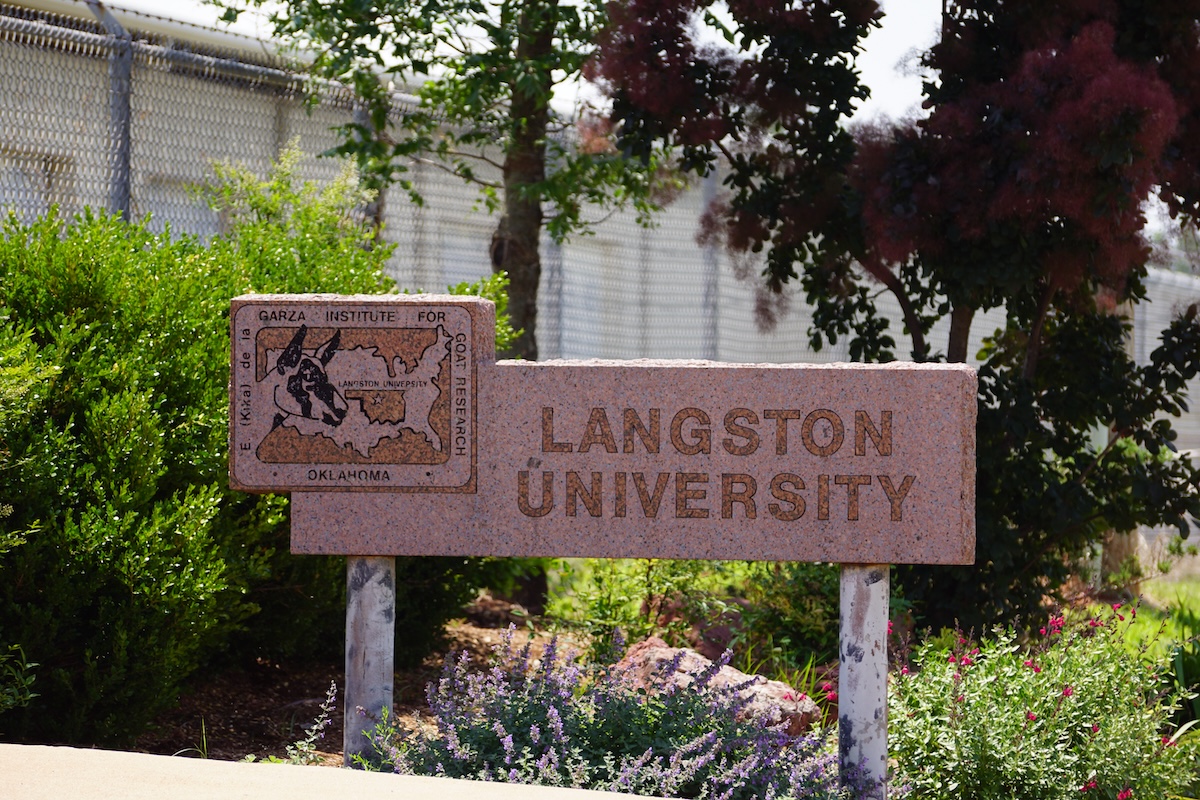
TALK OF GREENWOOD
Dr. Jerry Goodwin
Langston University, founded in 1897, has four campuses across the state. The HBCU is now recognized as a Research College and University by the Carnegie Classification of Higher Education Institutions. Photo Provided.
Langston University has been designated a Research College and University by the Carnegie Classification of Higher Education Institutions. Oklahoma’s HBCU (Historically Black College and University) is one of only 216 institutions nationwide to hold this classification.
“This recognition highlights the hard work and dedication of our researchers, faculty, and staff who strive to strengthen the academy,” said Dr. Alonzo Peterson, vice president for Academic Affairs. “We have very smart people at Langston University. I am always inspired when I visit the labs or sit down with my colleagues.”
Faculty, staff, and students at Langston University conduct research in a variety of areas across multiple disciplines. The university is known internationally for its E. (Kika) de la Garza American Institute for Goat Research. Additionally, the higher education institution has research programs for horticulture and agronomy, aquaculture and aquaponics, biotechnology, and agribusiness and rural economic development.
Notably, the university’s Rehabilitation Research and Training Center was renewed for a third five-year cycle of funding from the National Institute on Disability, Independent Living, and Rehabilitation Research in late 2023.
Since 1973, the Carnegie Classification has been the leading framework for recognizing and describing institutional diversity in higher education across the United States. Administered by the American Council on Education (ACE), the Carnegie Classifications are updated every three years. It gives institutions designations based on their sizes, types of degrees conferred, and other characteristics.
ACE, the Carnegie Foundation, and the Carnegie Classification have been interested in the amount and types of research conducted at institutions. Traditionally, the designation is reserved for coveted Research 1 (R1) and Research 2 (R2) doctoral institutions with high research spending. For 2025, the Carnegie Classification has updated its metrics to clarify distinctions between R1 and R2 institutions while adding a third research designation for non-doctoral institutions: Research College and University.
“On average, institutions in this category spend at least $2.5 million annually on research and development,” said President Ruth Ray Jackson. “Langston University’s research expenditures totaled $10,505,000 in fiscal year 2023. This recognition underscores Langston University’s commitment to expanding research excellence and advancing our institutional impact.”
The threshold for an R2 designation is $5 million in research spending annually, which Langston University exceeds. At least 20 research doctorates are awarded annually. Langston University offers one doctoral program, the Doctor of Physical Therapy, which is a professional rather than a research doctorate.
There are more than 4,300 higher education institutions in the United States; of these, 542 institutions received some level of research designation. Seven of 542 universities are in Oklahoma, and 40 are Historically Black Colleges or Universities. Nineteen of the country’s 1,890 land-grant institutions, including Langston University, have received a research designation.
Langston University
As Oklahoma’s only HBCU, Langston University, formerly known as Colored Agricultural and Normal University, was founded as a land grant college in 1897. Today, the university provides its students with a world-class education that includes hands-on learning through impactful research and beneficial internships. The administration, faculty, and staff prepare the students for life after college while letting them enjoy an open and vibrant community that wants to help them grow and develop into a world-class professional. For more information, visit https://langston.edu/.










